Three proven infrared treatments can help restore your damaged nerve cells. Low-level laser therapy (LLLT) boosts cellular energy and healing by increasing ATP production and blood flow. Photobiomodulation (PBM) activates your mitochondria and triggers growth factors essential for nerve regeneration while reducing neuropathic pain. High-intensity deep tissue treatment penetrates deeply to accelerate nerve recovery and improve circulation without invasive procedures. Each treatment offers unique benefits through different mechanisms, working to repair and regenerate nerve tissue. Understanding how these treatments work will help you make an informed decision about your nerve recovery journey.
Low-Level Laser Cell Stimulation
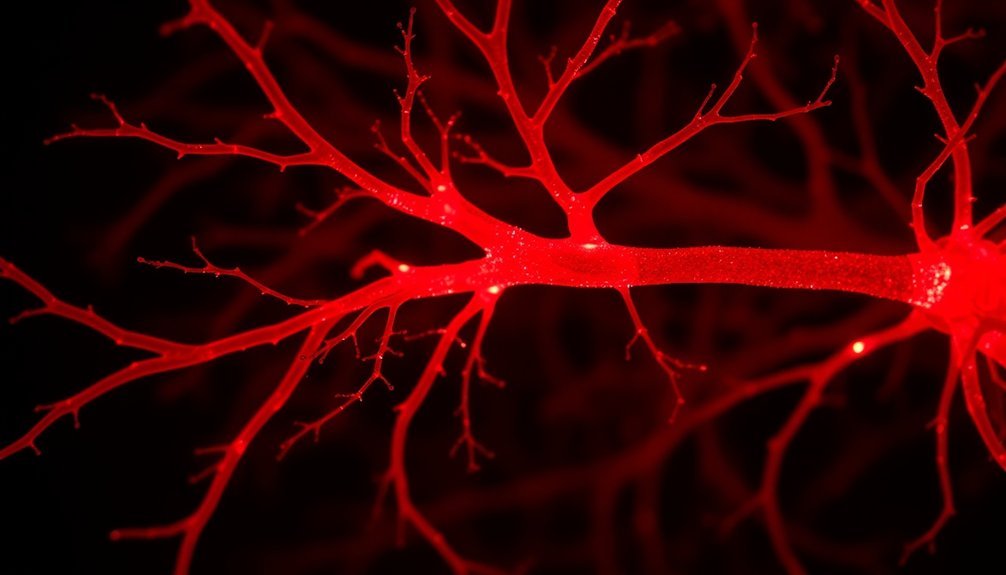
The remarkable potential of low-level laser therapy (LLLT) lies in its ability to stimulate cellular repair and regeneration at the molecular level. When you undergo LLLT treatment, the laser light triggers increased ATP production in your cells, providing them with more energy to facilitate healing processes.
It also boosts nitric oxide production, which improves blood flow and nutrient delivery to the treated areas. Studies show that LLLT can effectively treat digestive tract disorders, including irritable bowel syndrome and inflammatory conditions.
LLLT works through multiple mechanisms to support nerve recovery. It modulates your autonomic nervous system, particularly enhancing parasympathetic activity, which can be measured through improved heart rate variability.
The therapy promotes cell proliferation at lower energy densities (2-10 J/cm²), making it especially effective for tissue repair. What's particularly significant is LLLT's ability to reduce inflammation by inhibiting specific cellular pathways involving IkBα and NF-kB.
For ideal results, your treatment must be precisely calibrated, as LLLT exhibits a biphasic response. While lower energy densities promote healing and cell proliferation, higher doses can actually trigger cell death through apoptosis.
This makes it essential to work with a qualified practitioner who can determine the appropriate energy density for your specific condition.
Photobiomodulation Nerve Recovery
Photobiomodulation (PBM) therapy harnesses red and near-infrared light to revolutionize nerve recovery through four key mechanisms. First, it activates your mitochondria's cytochrome c oxidase, boosting ATP production and enhancing neuronal metabolism.
Second, it increases antioxidation levels in nerve regeneration fluid, protecting cells during healing. Studies show class 2b cold lasers have been particularly effective at stimulating cellular repair.
Third, it triggers nitric oxide and growth factor production, which modulates genes essential for cell growth and nerve function.
Fourth, it promotes neural factor secretion that creates ideal conditions for nerve regeneration.
You'll notice significant improvements in nerve recovery when using PBM therapy. It accelerates blood flow to your axons and myelin sheaths while reducing neuropathic pain and improving sensation.
If you're dealing with facial nerve damage, you can expect faster recovery of movement and function. The therapy's also proven effective for conditions like fibromyalgia, phantom limb pain, and trigeminal neuralgia.
To get the best results, you'll need precise treatment parameters. These include specific wavelengths (typically 660nm or 850nm), carefully controlled energy density, and appropriate treatment duration. Your healthcare provider will determine whether pulsed or continuous light delivery works best for your condition.
High-Intensity Deep Tissue Treatment
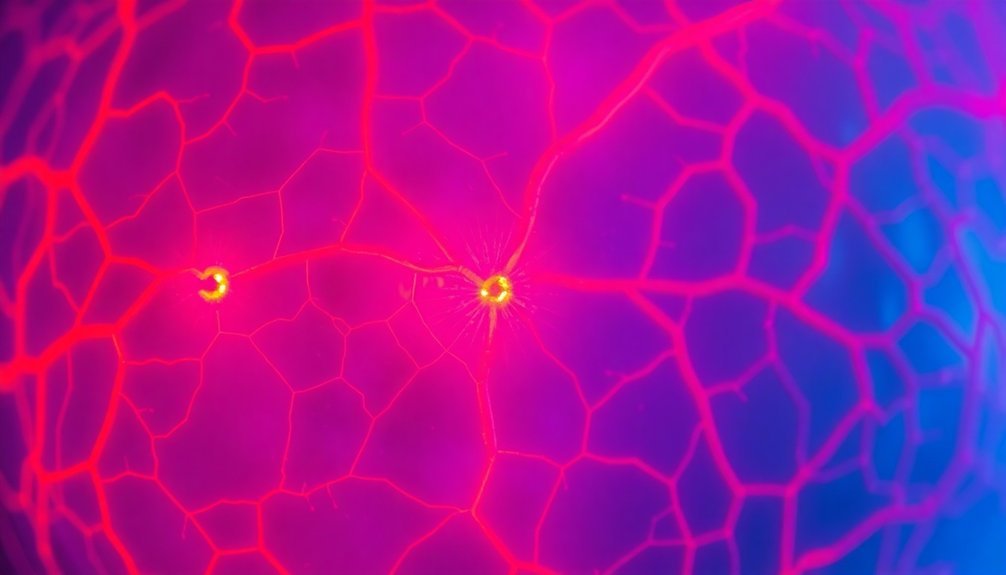
Through advanced technology, high-intensity deep tissue treatment delivers powerful infrared energy that penetrates deep beneath your skin to accelerate nerve cell recovery. This treatment triggers photochemical changes in your cells, promoting tissue repair and healing through photobiomodulation. The process increases ATP production in mitochondria, enhancing cellular metabolism and energy production.
You'll experience significant pain relief as the treatment reduces inflammation and softens scar tissue.
When you're dealing with chronic musculoskeletal pain or neuropathy, you'll find this treatment particularly effective. It's proven to outperform other therapies, including low-level laser treatment, showing a 100% probability of being the most effective option for pain relief. You can use it to treat pain in your back, hips, knees, and neck, while also addressing numbness and nerve dysfunction.
What makes this treatment exceptional is its ability to reset chronic pain cycles by penetrating deeply into your cells. It'll improve your circulation, reduce inflammation, and facilitate nerve regeneration.
You can combine it with physical therapy for enhanced results, making it a versatile option in your pain management plan. It's non-invasive and drug-free, offering you a safe alternative to traditional pain treatments.
Frequently Asked Questions
Can Infrared Therapy Be Combined With Nerve Repair Medications?
Yes, you can safely combine infrared therapy with nerve repair medications. It's often beneficial as the therapy enhances blood flow and cellular repair, which may help your medications work more effectively in damaged areas.
How Long Does Nerve Cell Recovery Typically Take With Infrared Treatments?
You'll typically see nerve recovery progress over 60 days with daily infrared treatments. While mild cases may improve in weeks, severe damage can take several months, depending on your specific condition and treatment consistency.
Are There Age Restrictions for Receiving Infrared Therapy for Nerve Damage?
You'll find no strict age restrictions for infrared therapy, but you should consult your healthcare provider first. While it's generally safe for adults, children and elderly patients may need special consideration before starting treatment.
Do Home Infrared Devices Provide the Same Benefits as Clinical Treatments?
No, home devices don't provide the same benefits as clinical treatments. You'll find they're less powerful, lack precise wavelength control, and aren't supervised by professionals, which can limit their effectiveness for therapeutic purposes.
What Dietary Changes Can Enhance the Effectiveness of Infrared Nerve Treatments?
You'll boost infrared therapy's effectiveness by eating antioxidant-rich berries, consuming omega-3s, adding turmeric and ginger to meals, and increasing your B12 intake through leafy greens or supplements. Focus on anti-inflammatory foods.
In Summary
You've now learned about three powerful infrared treatments that can help repair and regenerate damaged nerve cells. Whether you're dealing with neuropathy or recovering from injury, you'll find that low-level laser stimulation, photobiomodulation therapy, and high-intensity deep tissue treatment each offer unique benefits. Choose the method that best fits your needs, but remember to consult your healthcare provider before starting any new treatment protocol.
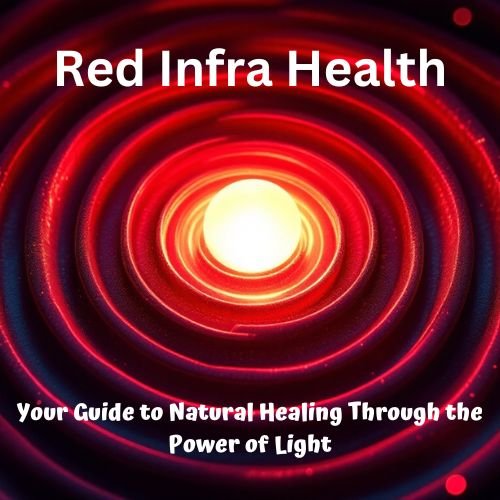
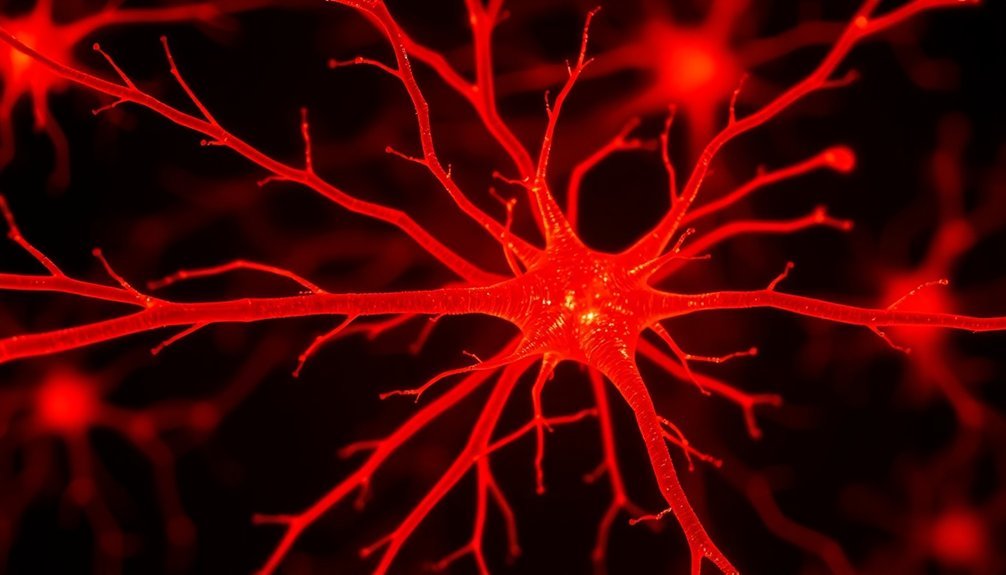

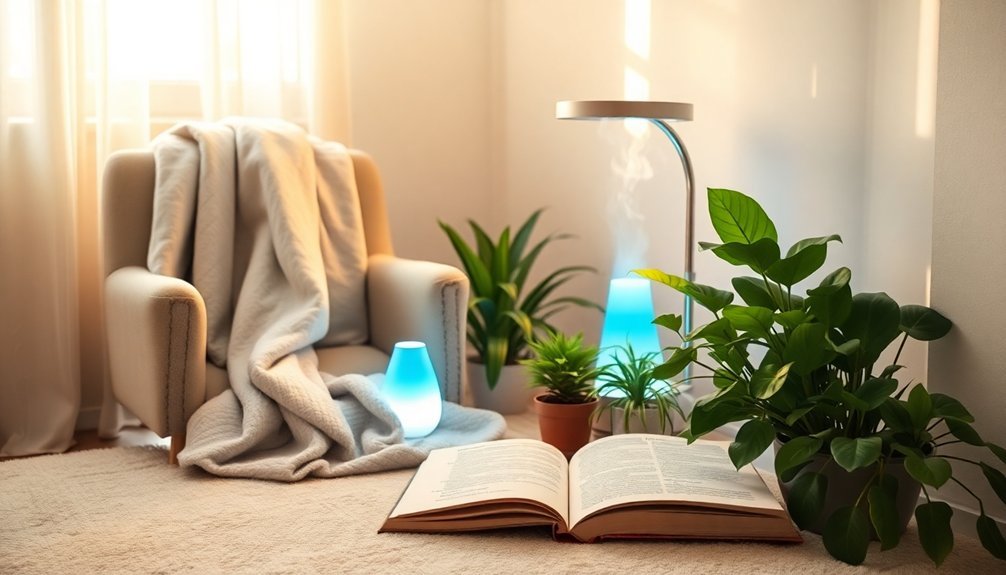

Leave a Reply